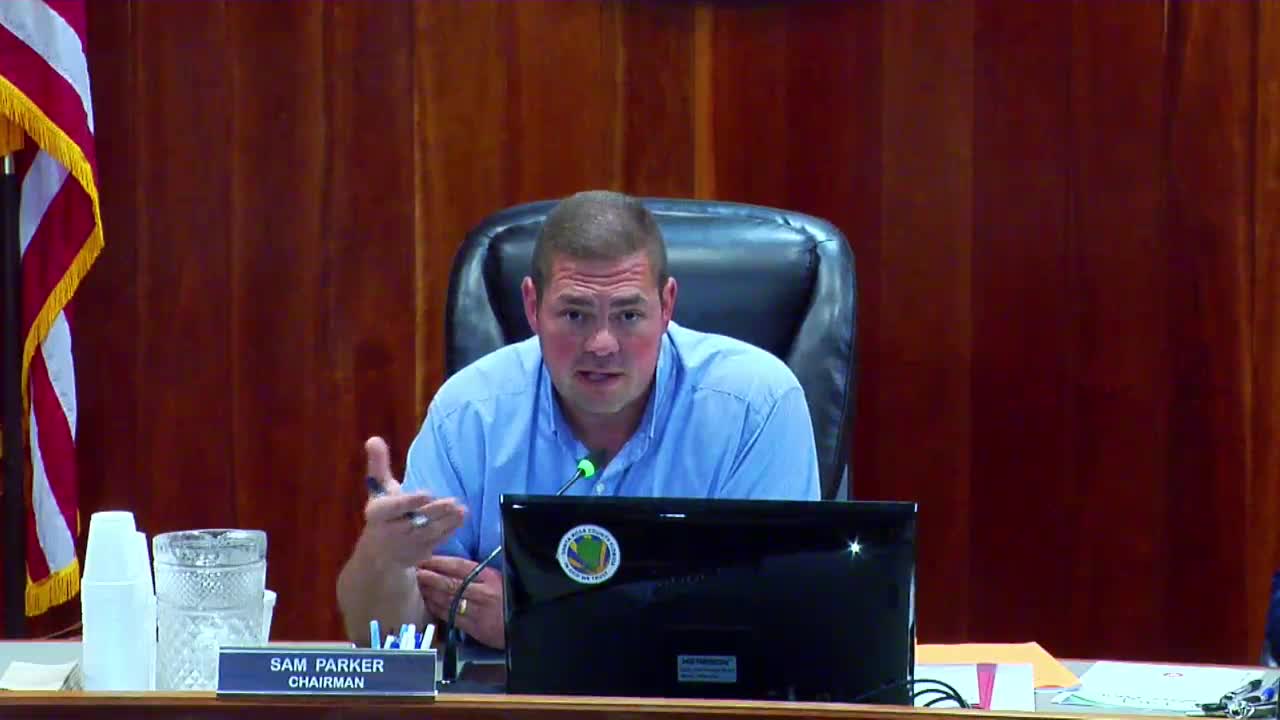Controversy Erupts Over Proposed Borrow Pit Regulations
August 22, 2024 | Santa Rosa County, Florida
This article was created by AI summarizing key points discussed. AI makes mistakes, so for full details and context, please refer to the video of the full meeting. Please report any errors so we can fix them. Report an error »

In a recent government meeting, officials engaged in a heated discussion regarding the potential approval of a borrow pit on a property that has raised concerns among local residents. The debate centered around the interpretation of land development codes and the implications of allowing dirt to be moved off the property for repairs.
One commissioner argued that the current zoning laws do not permit the establishment of a borrow pit, emphasizing that while the property owner could perform certain activities, such as digging a pond or moving dirt within the property, transporting dirt off-site would violate existing regulations. This perspective was met with counterarguments suggesting that the intent of the property owner was to address issues on the land rather than create a commercial operation.
Concerns were also raised about the environmental impact of the proposed borrow pit, particularly regarding the protection of local wells and aquifers. One commissioner highlighted the lack of engineering studies to support claims that the borrow pit would not adversely affect nearby water sources, arguing that common sense dictates that moving dirt should not damage wells located hundreds of feet away.
The discussion took a turn as some officials expressed apprehension about setting a precedent for future borrow pits, citing the existence of numerous illegal pits in the county. They cautioned that approving this request could lead to a flood of similar applications, complicating enforcement and regulation efforts.
Opposition to the proposal was also voiced by residents who argued that it is not the county's responsibility to financially assist property owners who have inherited land that requires significant repairs. They contended that if the owner cannot afford to fix the property, they should consider selling it rather than relying on government intervention.
As the meeting concluded, it was clear that the board would need to carefully weigh the legal, environmental, and community implications of the proposed borrow pit before making a final decision. The discussions highlighted the complexities of land use regulations and the challenges faced by local governments in balancing property rights with community interests.
One commissioner argued that the current zoning laws do not permit the establishment of a borrow pit, emphasizing that while the property owner could perform certain activities, such as digging a pond or moving dirt within the property, transporting dirt off-site would violate existing regulations. This perspective was met with counterarguments suggesting that the intent of the property owner was to address issues on the land rather than create a commercial operation.
Concerns were also raised about the environmental impact of the proposed borrow pit, particularly regarding the protection of local wells and aquifers. One commissioner highlighted the lack of engineering studies to support claims that the borrow pit would not adversely affect nearby water sources, arguing that common sense dictates that moving dirt should not damage wells located hundreds of feet away.
The discussion took a turn as some officials expressed apprehension about setting a precedent for future borrow pits, citing the existence of numerous illegal pits in the county. They cautioned that approving this request could lead to a flood of similar applications, complicating enforcement and regulation efforts.
Opposition to the proposal was also voiced by residents who argued that it is not the county's responsibility to financially assist property owners who have inherited land that requires significant repairs. They contended that if the owner cannot afford to fix the property, they should consider selling it rather than relying on government intervention.
As the meeting concluded, it was clear that the board would need to carefully weigh the legal, environmental, and community implications of the proposed borrow pit before making a final decision. The discussions highlighted the complexities of land use regulations and the challenges faced by local governments in balancing property rights with community interests.
View full meeting
This article is based on a recent meeting—watch the full video and explore the complete transcript for deeper insights into the discussion.
View full meeting